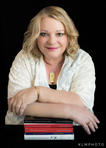The tragedy of John Winthrop's widow
John Winthrop's fourth wife, Martha Rainsborough
© Christy K. Robinson
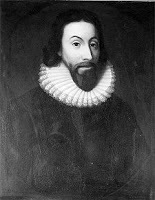 John Winthrop, 1588-1649 Why would I steal time from writing my historical novel onMary and William Dyer, to write an article about the fourth wife of GovernorJohn Winthrop of Massachusetts?She had no connection to the Dyers that I've ever seen. But in clearing up a(
gasp!
) mistake I found in a biography of Winthrop,I found a window into New England in 1650s Boston that sheds some light on theenvironment and culture in which Mary Dyer moved, her last three years of life.
John Winthrop, 1588-1649 Why would I steal time from writing my historical novel onMary and William Dyer, to write an article about the fourth wife of GovernorJohn Winthrop of Massachusetts?She had no connection to the Dyers that I've ever seen. But in clearing up a(
gasp!
) mistake I found in a biography of Winthrop,I found a window into New England in 1650s Boston that sheds some light on theenvironment and culture in which Mary Dyer moved, her last three years of life.John Winthrop was married four times and had a tribe ofchildren, though more died as infants than lived to procreate. His first wife,Mary Forth, produced most of the surviving Winthrops, but she died in childbirth. Hissecond wife, Thomasine Clopton, died from childbirth complications one yearafter he married her. His third wife, Margaret Tyndall, was the love of JohnWinthrop's life, and though she had a number of pregnancies, only one or twogrew to adulthood. John emigrated to Massachusettsin 1630, and Margaret followed about 18 months later. Her last pregnancymiscarried in October 1637 on the eve of Anne Hutchinson's heresy trial—andAnne, a midwife, attended her! In fact, when Anne collapsed in exhaustion afterstanding all day at her trial, it was because she'd been up the night before,attending Margaret. Margaret was very much loved by her step-children, who wereyoung when she took over their care.
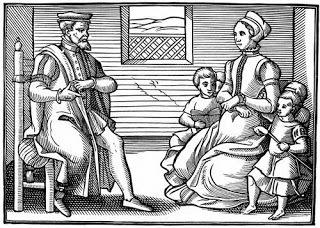
In 1643, John Winthrop's and Margaret Tyndall's son, Stephen,married Englishwoman Judith Rainsborough (remember that surname) and moved fromBoston back to England to eventually attain therank of colonel in the Parliamentary forces in their Civil War.
Martha Rainsborough (seven years older than her sisterJudith) and her husband, Captain Thomas Coytmore, had married in 1635 in England, and emigrated to Boston in 1636. They settled in Charlestown, where Thomas was both amiller—and apparently a sea captain for his father, who was part of the EastIndia Trading Company. In case of his death, Thomas made a trust for his son,which was arranged by Rev. Increase Nowell.In 1644, Captain Coytmore was lost at sea off Cadiz, Spain.The trust, then, provided an inheritance for the Coytmore boy: lands inCharlestown/Marden area, as far as I could determine.
[Winthrop'sbiography author had off-handedly identified Winthop's widow as Martha Nowell Cotymore, the "sister ofIncrease Nowell." I could only find a couple of references tying those namestogether, and that from highly-suspect, amateur genealogy pages. Besides, Ithought, why would her parents and many siblings be surnamed Rainsborough, but shewould be surnamed Nowell? Nope, just doesn't work for me. So I looked up the scantinfo on Coytmore and learned from a nineteenth-century Google Books volume thatThomas's mother had had two children from a first marriage, and his half-sisterParnell married the moderately-famous Rev. Increase Nowell, who was treasurerof Massachusetts Bay Colony. This made Mr. Nowell the half-brother-in-law ofThomas Coytmore, and no blood relation at all to Martha Rainsborough Coytmore,so give her back her true name! And PS: the author spelled it Cotymore, whichis incorrect.]
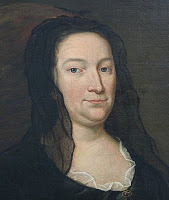 An unknown 17th-century
An unknown 17th-century widow of high status.
Back to Martha. After she was widowed, she moved to Boston, to a house on Cornhill Road.(From 1635-1638, William and Mary Dyer lived on the east of Cornhill Road.) Because the Rainsboroughs were well-known puritans in England, her youngersister had married John Winthrop's son, and because Cornhill was a majorthoroughfare in the small town of Boston,the Winthrops and Martha probably were acquainted.
Margaret Tyndall Winthrop fell victim to the yellow fever epidemicin New England (carried by African slaves via Barbados), and died June 14, 1647.She and John had been married for 29 years, and she was tenderly, devotedlyloved.
Six months after Margaret Winthrop's death, after December20, 1647, John married, as his fourth wife, Martha Rainsborough Coytmore, awidow with a young son. John was 59, she was 30. At this time, and in theircultural beliefs, Martha became the mother-in-law of her own sister Judith!(Seems creepy today, doesn't it?!) The Winthrop honeymoon must have lasted at leastthree months: Martha became pregnant in March.
John Winthrop apparently had several bouts of an unexplainedillness in 1648, and he was weak for more than a month in the autumn. His andMartha's baby son Joshua was christened in Boston'sFirst Church in December. John succumbed toillness on March 26, 1649, leaving 31-year-old Martha a widow again. John's propertieshad already been deeded to his adult sons, but as widow of the high-status Winthrop, and mother ofhis baby, she would have been treated with respect, and had some sort ofsettlement.
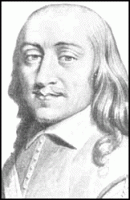 Col. Thomas Rainsborough,
Col. Thomas Rainsborough,Martha's eldest brother
Martha's oldest brother, Col. ThomasRainsborough, was killed at Pontefract Castle in October 1648;she would not have heard of it until at least February 1649, if a ship bravedthe winter storms with the news. More likely, the news would have come at aboutthe time of Winthrop'sdeath in late March.
At some point, Martha's Coytmore son died, and the Coytmore trustbecame her property. In 1651, Joshua Winthrop died at about two and a halfyears old. On March 10, 1652, Martha married John Coggan of Boston,a miller who had known her first husband, and they moved to Malden, Massachusetts.In 1658, Coggan died, leaving Martha a widow for the third time with nochildren, at age 41. (Being married and having children was a core belief ofpuritans, and now Martha was bereaved and alone, and her siblings were home in England.)
The next record I found of Martha was an account from Rev.John Davenport. The woman who had been the sister of military officers, and thewidow of two prosperous millers and a famous governor, was "discontented that she had nosuitors, and that she encouraged her farmer [either her farm manager, or atenant on her lands], a mean man, to make a motion to her for marriage, whichaccordingly he propounded, prosecuted, and proceeded in it so far thatafterwards, when she reflected upon what she had done, and what a change of heroutward condition she was bringing herself into, she was discontented,despaired, and took a great quantity of rats bane, and so died. Fides sit penes auctorem. [Faith is the responsibility of the Author.]"
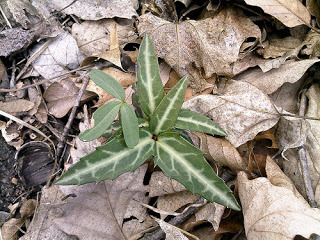 Rats bane, native to New England
Rats bane, native to New EnglandOn October 24, 1660, aged 43, Martha Rainsborough CoytmoreWinthrop Coggan committed suicide. Rats bane is arsenic trioxide, and its usein homicide or suicide was primarily a woman's preferred, nonconfrontationalmethod. It might have been available to Martha through patent medicines (whichJohn Winthrop and his son John Winthrop Jr. were known to concoct and sell), oras a common treatment for syphilis. Or, most obviously, as a rat poison, tokeep the vermin out of their stored food supplies.
One author called poisoning "the mark of lethal andtreacherous intimacy, the most extreme violation of domestic order." PoorMartha. She couldn't stand living alone, but she wouldn't suffer such a fall asto be the childless, aging wife of a lowly farmer of poor regard, who onlywanted her for her property.
Lastly, we hear another word about Martha, in the Massachusetts Archives. Petition of Margaret Sheaffe to theGeneral Court, in 1662, for a title to the house and land of Martha, widow ofJohn Coggan (we suppose the Albion lot, on the corner of Tremont and Beaconstreets), for which Mrs. Sheaffe had paid the purchase money to Mrs. Cogganbefore the latter, having been left by the Lord "to Sathan's temptations, whichwas too strong for her, made away with herself."
That's the final judgment of the General Court underGovernor John Endecott, then: Martha was not worthy to be called the widow ofthe great Governor John Winthrop; and she was not of the Elect who would besaved in the kingdom of God, it being obviousthat the Lord had left her to Satan.
Published on November 18, 2011 20:17
No comments have been added yet.

